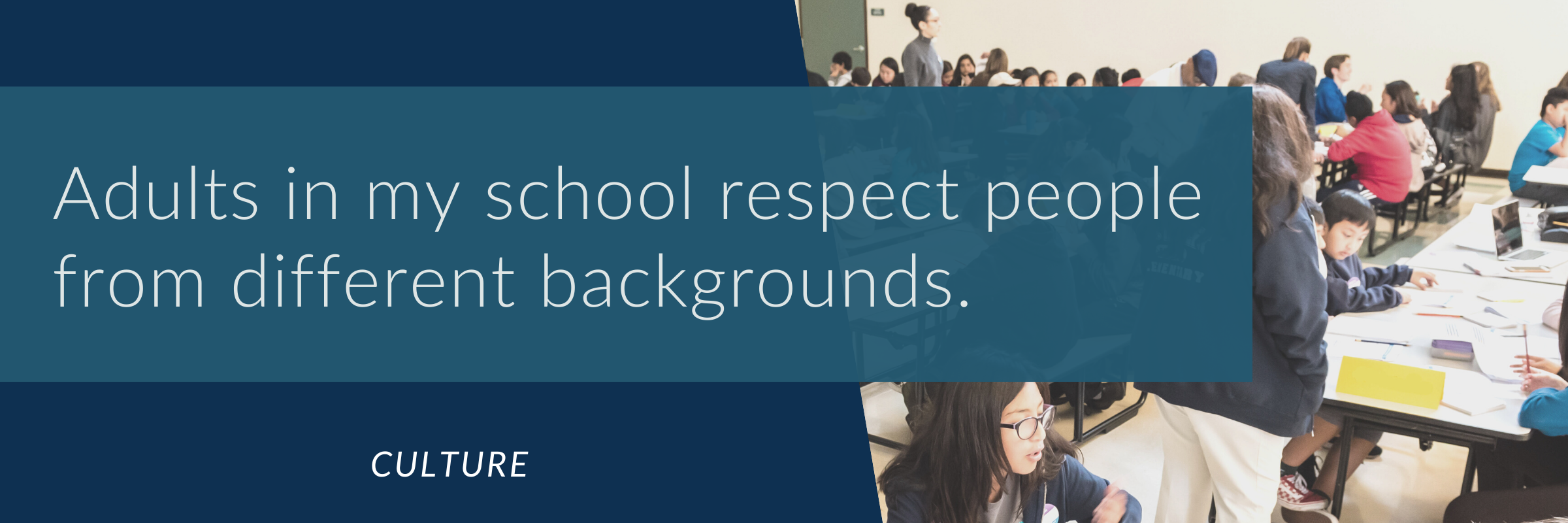
Why does it matter?
The question “Adults in my school respect people from different backgrounds. (For example, people of different races, ethnicities, and genders.)” helps educators gauge whether schools and classrooms are inclusive and free of bias. Everyone deserves to feel like they are respected and included in a school’s community.
Schools have much to benefit from capitalizing on the rich array of experiences, backgrounds, and skills diverse students, families, and staff bring. Furthemore, all students deserve to feel like they are a part of their school’s community. Kansas University’s Center for Teaching Excellence has some top-notch ideas for building more inclusive school classroom environments.
Look for way to increase student exposure to the diversity of human experience: How can we incorporate content that addresses and models diversity? Do posters around school represent different groups? What opportunities exist to add different frames of reference to curriculum?
Include issues of diversity as part of learning outcomes: Incorporate images of people that represent different ethnicities, races, and genders. Try to use examples that disrupt cultural assumptions where possible. Discuss the contributions of diverse peoples, and be sure to make classrooms inspiring places for underrepresented students.
When it comes time for students to learn in teams, create diverse groups: Students who feel isolated within their groups lose out on the benefits of collaborative learning. Provide guidelines for group interactions, check-in on group functionality with peer feedback, and intervene to restructure groups as needed.
Reflect on your own background and experiences: How might your own background and cultural influences affect how you have designed your course? Does the material provide an accurate representation of various perspectives?” at the end of this, can we add something like: Sharing with students about your culture, family background, and/or upbringing is a jumping-off point for them to be open with you. Model vulnerability by sharing about your life, and model acceptance by acknowledging that there’s no one right way to live.
